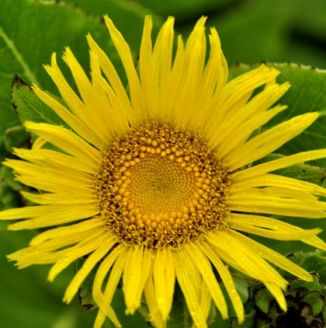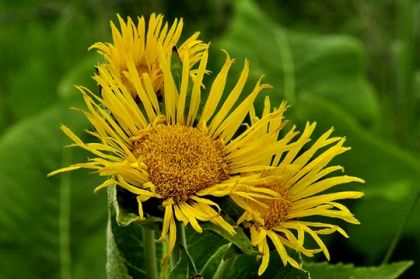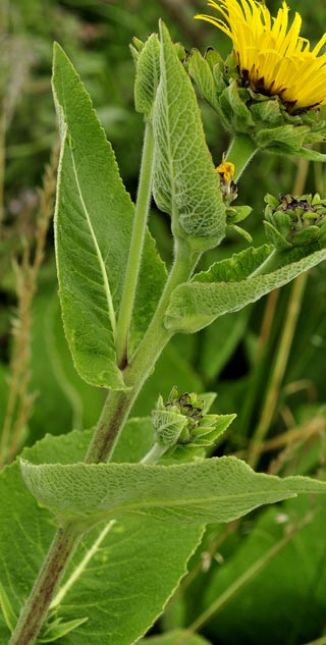Tall – sometimes reaching 2metres – this is a most distinctive perennial. Not found too frequently, it bears large, daisy-like yellow flowers (5-8cm across) in small clusters on long, hairy stems in July and August. The rays of the flower-heads are narrow with three-notched ends and surround the numerous deep-yellow disc florets. The toothed leaves (to 40cm) are hairy below, the upper clasping the stem, the lower being broad, ovate and stalked. This is an introduced species which has become naturalised. It belongs to the Asteraceae family.
I first recorded this plant near Ballyvaughan, Co Clare in 2009 when I also photographed it.
If you are satisfied you have correctly identified this plant, please submit your sighting to the National Biodiversity Data Centre




